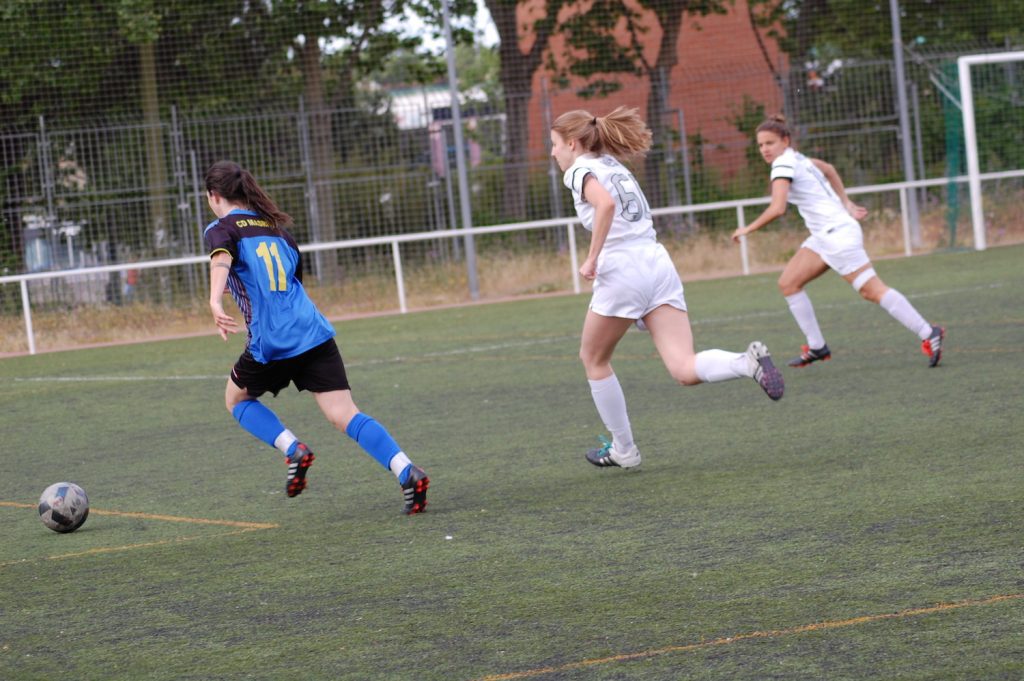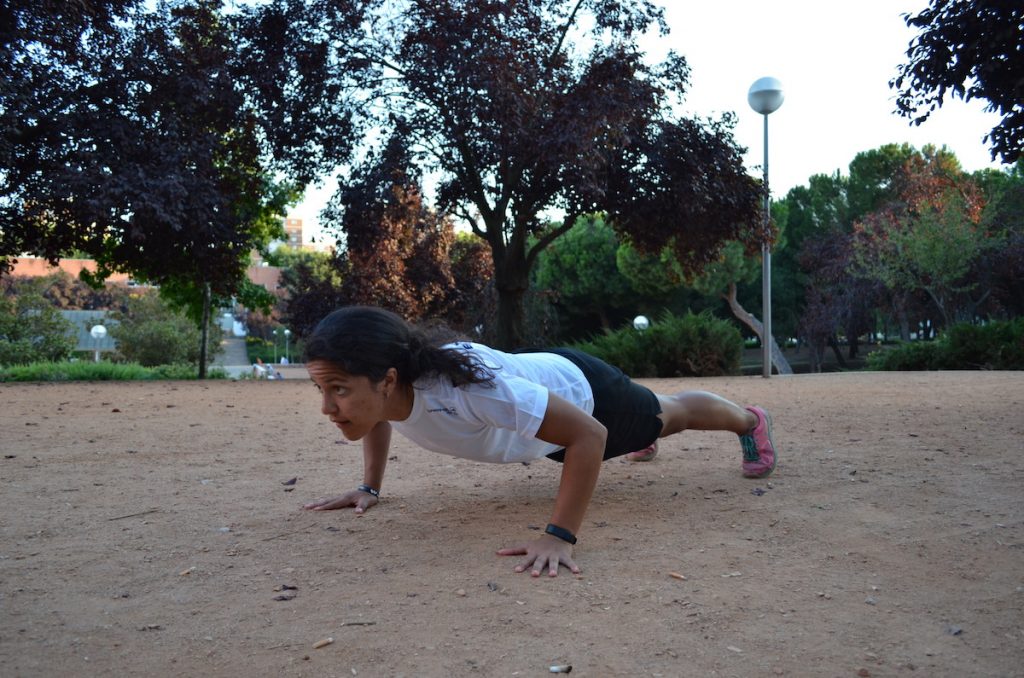What is Psiqueright?
This is a sport psychology blog applied to CrossFit. In late 2018 I decided to join my two passions in one platform.
The mission? Providing basic free content regarding psychology and its application to the “Sport of Fitness”.
This is a sport psychology blog applied to CrossFit. In late 2018 I decided to join my two passions in one platform.
The mission? Providing basic free content regarding psychology and its application to the “Sport of Fitness”.

El fútbol es un deporte de invasión que exige procesar una gran cantidad de información en un tiempo reducido. Como consecuencia, suscitan gran interés los procesos cognitivos que median en la toma de decisiones – como la impulsividad. Ante la constante variabilidad de la información sensorial recogida, el jugador se ve forzado a inhibir patrones de respuesta, anticipar acciones y coordinar segmentos corporales para adaptarse al entorno (Lage et. al, 2011).
La definición clásica de la impulsividad es la “incapacidad para evaluar el riesgo asociado a comportamientos o decisiones, o la tendencia a elegir opciones a pesar de la evaluación precisa del riesgo asociado a ellas” (Eysenck y McGurk, 1980). Sin embargo, este constructo es más complejo de lo que parece.
Puede suponer, o bien una barrera que fracasa al regular emociones y conductas o un refuerzo para los que buscan sensaciones o apego afectivo (González-Hernández et. al, 2019). Pero es que además puede considerarse la impulsividad en su vertiente atencional – incapacidad para mantener la concentración en estímulos selccionados – o en su vertiente conductual.
Para más inri, la impulsividad lleva aparejados otros atributos psicológicos si lo entendemos desde una perspectiva cognitiva, emocional o social:

Pero para los propósitos de este artículo vamos a dejar las implicaciones clínicas a un lado. Nos vamos a centrar en las consecuencias que tiene la impulsividad en la toma de de decisiones y, para ello, debemos fijarnos en las características de cada jugador. De forma intuitiva, nos formamos una idea más o menos clara de quiénes son impulsivos y quiénes no a través de acciones específicas.
En futbolistas de corte defensivo una elevada impulsividad acarrea consecuencias negativas: faltas sobre el oponente cercanas al área propia, cortes apresurados que facilitan el dribbling del rival o acciones agresivas contra el oponente. En jugadores ofensivos, en cambio, la impulsividad puede ser funcional dado que provocar situaciones de ventaja para el equipo depende necesariamente de tomar decisiones arriesgadas.
Los principios tácticos ofensivos y defensivos difieren en cuanto a sus objetivos y rasgos de personalidad como la impulsividad pueden mediar en su correcta aplicación. Tomar decisiones rápidas bajo presión tiene gran valor para un delantero mientras que los perfiles más conservadores muestran mayor solvencia en roles defensivos.
La impulsividad suele verse como algo negativo y, como hemos visto, puede ser muy útil en futbolistas de proyección ofensiva. Sin embargo, para los intereses defensivos surte el efecto contrario. Por eso, resulta interesante plantearse si existe un perfil psicológico ideal para el futbolista.
Pero, ¿es un jugador delantero porque es impulsivo o es impulsivo porque es delantero? Y la respuesta es evidente: la personalidad precede a la elección de una posición. Lo que sí podría ser de utilidad es tener en cuenta estos rasgos en los jugadores para ayudarles a desempeñar el mejor rol según su perfil.
Preferiblemente esto debe hacerse desde el fútbol base, aunque en casos excepcionales puede reeducarse a un jugador en otra posición que le resulte más natural. Esto, en última instancia, conseguirá mejores resultados a nivel individual y colectivo.
No obstante, no debemos olvidar que los atributos psicológicos sirven como arma de doble filo. Un jugador impulsivo suele tolerar peor los errores, puede ser más agresivo y gestionar inadecuadamente sus emociones. Y, por otra parte, los jugadores reflexivos suelen tener problemas para decidir de forma rápida y asumir riesgos (a veces necesarios según demandas situacionales).
Mi recomendación es que desarrolléis actividades específicas dirigidas a trabajar los atributos psicológicos: perfeccionar la toma de decisiones en situaciones rápidas en mediocentros ofensivos y delanteros y consolidar las actuaciones defensivas contra ataques posicionales. Pero también debemos enfrentar a nuestros jugadores a decisiones arriesgadas, errores y situaciones frustrantes para entrenar la gestión emocional.
- Castillo-Rodríguez, A., Madinabeitia, I., Castillo-Díaz, A., Cárdenas, D., & Alarcón, F. (2018). La impulsividad determina el rol desempeñado por los jugadores de futsal. - Eysenck, S. B. y McGurk, B. J. (1980). Impulsiveness and venturesomeness in a detention center populations. Psychological Reports, 47, 1299–1306. - Ezquerro, M., & Buceta, J. M. (2001). Estilo de procesamiento de la información y toma de decisiones en competiciones deportivas: Las dimensiones rapidez y exactitud cognitivas. Análise Psicológica, 19(1), 37-50. - González-Hernández, J., Capilla Díaz, C., Gómez-López, M., & Raimundi, J. (2019). Impulsiveness and cognitive patterns. Understanding the perfectionistic responses in Spanish competitive junior athletes. Frontiers in psychology, 10, 1605. - Lage, G. M., Gallo, L. G., Cassiano, G. J., Lobo, I. L., Vieira, M. V., Salgado, J. V., et al. (2011). Correlations between impulsivity and technical performance in handball female athletes. Psychology 2, 721–726. - Santos, R., Padilha, M. B. y Teoldo, I. (2014). Relationship between tactical behavior and effective decision-making in U-17 youth soccer players. Human Movement, 15(2), 100-104

Amongst the protective measures taken at an international scale to impede the advances of the Coronavirus, we’re faced with an unprecedented situation: CrossFit boxes and gyms are being locked down.
Moreover, social distancing is also being reinforced which ultimately means we can’t go to our neighborhood’s park to jump onto benches and do pull-ups on the monkey bars. Altogether, these circumstances will disrupt our daily routines and we’re at risk of seeing our healthy lifestyles take a hit.
There’s a silver lining to every unfavorable situation and, in this case, we’ll get to put our true nature to the test. Using the virus and the measures against it as an excuse to abandon self-care activities will be one of the biggest threats for the general population.
If we’re aware of this possibility and take action, we might be able to keep our sense of self alive and well to endure these circumstances. Many CrossFiters have invested heavily in this training methodology and lifestyle; this disconnect is just another test of the unknown and unknowable: how do you fare in unforeseeable situations?

We’ve probably heard it a million times but you’d be surprised the amount of people who flee the box when there’s not a barbell in sight. Well, turns out you’ll probably have to turn to bodyweight movements and cardio machines for a little bit (unless you’re lucky enough to have a fully-equipped home gym).
Don’t panic! Here’s a list of devastating minimal equipment WODs to keep you busy. You also have free access to programming on CrossFit mainsite – which usually includes a home version of it -. You can also find home workouts for free on Noah Ohlsen’s instagram page or daily home workouts at Comptrain’s website.
I’ve been on the home WOD wagon for quite some time because I enjoy training by myself so here’s a few of my go-to home burners:
Also, you can adapt any of the CrossFit benchmark WODs using odd-objects as weights (gallons of water, your couch, a backpack filled with books, …) and your furniture as gymnastic equipment (chair dips, rows under your table, …). Remember: “necessity is the mother of invention!”
By definition, anxiety is a series of physiological, cognitive and behavioral mechanisms that are activated in response to a perceived threat. Current events can definitely be considered a real threat because they involve two key aspects: a potential health issue and uncertainty. Therefore, many of us may be experiencing symptoms of anxiety.
This can also be paired with a stress response if the negative impact on our economy and social life is perceived as a burden that can’t be managed using our existing resources. If this state becomes chronic, the consequences for our physical and mental wellness can be devastating.
We must sharpen our anxiety & stress management tools to keep the intensity at a manageable level. Here’s a few of them to start off with:
If you’re motivated to keep living the healthy life despite the increasing difficulties we’re facing, diet is an aspect you should look into. Being confined within the four walls of our apartments is usually paired with boredom. And guess what? Boredom is a main precipitator for eating out of gluttony.
What’s our food of choice when we feel like snacking? Not broccoli, no sir. We indulge in ultraprocessed tasty foods to release dopamine in our brain’s reward pathway and momentarily defeat the boredom. In the long run, this’ll take its toll on both our bodies and our eating habits.
Here’s a few tips to help keep up the healthy food-related behaviors: